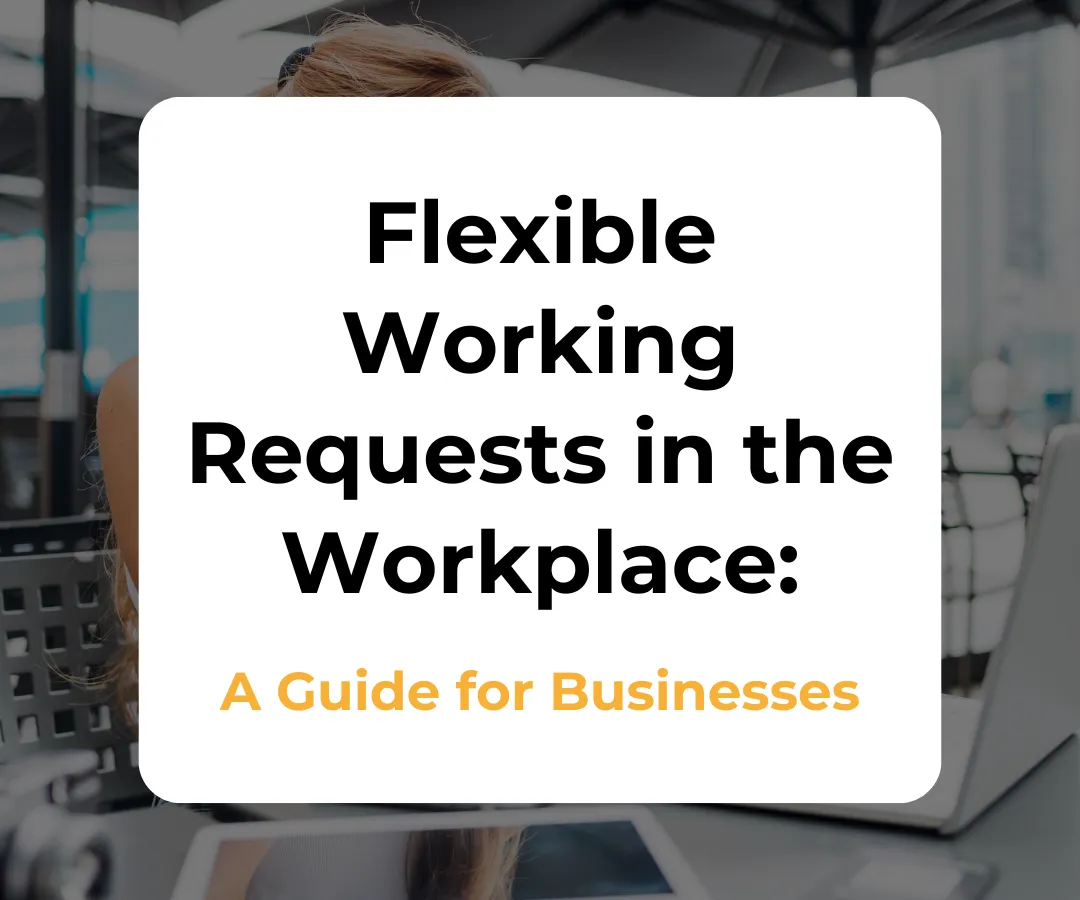Mon - Fri: 9:00 - 17:30
Legacy Strategies
Blogs & Articles
Stay up to date with the latest news
in Recruitment and Human Resources
Legacy Strategies
Blogs & Articles
Stay up to date with the latest news in Recruitment and Human Resources
At Legacy Strategies, we understand that the people behind any organisation are its most valuable asset. That's why we're excited to share our insights, expertise, and industry knowledge with you through our blogs.
In this space, you can find a wealth of information on the latest trends, best practices and innovative strategies that shape the Recruitment and HR landscape. Whether you're a HR professional, a hiring manager, a job seeker, or just someone interested in the ever-evolving world of talent acquisition and management, our blog is your go-to resource.
Stay tuned for regular updates as we explore the cutting-edge developments in HR technology, diversity and inclusion, talent acquisition strategies, and much more. We're here to empower you with knowledge that can drive your organisation's success!
At Legacy Strategies, we understand that the people behind any organisation are its most valuable asset. That's why we're excited to share our insights, expertise, and industry knowledge with you through our blogs.
In this space, you can find a wealth of information on the latest trends, best practices and innovative strategies that shape the Recruitment and HR landscape. Whether you're a HR professional, a hiring manager, a job seeker, or just someone interested in the ever-evolving world of talent acquisition and management, our blog is your go-to resource.
Stay tuned for regular updates as we explore the cutting-edge developments in HR technology, diversity and inclusion, talent acquisition strategies, and much more. We're here to empower you with knowledge that can drive your organisation's success!

Flexible Working Requests in the Workplace

The modern workplace has undergone a significant shift towards flexibility, driven by technological advancements, changing employee expectations, and the global impact of the COVID-19 pandemic. Flexible working arrangements, once considered a perk, are now a critical element of the employee value proposition. HR professionals are at the forefront of managing flexible working requests, balancing organisational needs with employee satisfaction. This blog post will explore how HR can effectively navigate flexible working requests, ensuring a win-win outcome for both the organisation and its employees.
Understanding Flexible Working: What It Means Today
Flexible working is a broad term that encompasses various arrangements allowing employees to choose how, when, and where they work. This could include:
Remote Working: Employees work from a location outside the traditional office, whether from home or another remote site.
Flexible Hours: Employees have the freedom to adjust their start and finish times, as long as they meet their total required hours.
Compressed Workweeks: Employees work longer hours over fewer days, such as four 10-hour days instead of five 8-hour days.
Job Sharing: Two employees share the responsibilities and hours of one full-time position.
Part-Time Work: Employees work fewer hours than the standard full-time schedule.
Understanding these different forms of flexibility is crucial for HR professionals when considering and responding to flexible working requests.
The Business Case for Flexible Working
Before diving into the specifics of handling requests, it’s important to recognise the benefits that flexible working arrangements can bring to an organisation.
Benefits:
Increased Productivity: Many studies have shown that flexible working can lead to higher productivity. Employees who have control over their schedules often work more efficiently.
Enhanced Employee Satisfaction and Retention: Offering flexibility is a powerful tool for attracting and retaining talent. Employees who enjoy a healthy work-life balance are more likely to stay with their employer.
Wider Talent Pool: Flexible working allows organisations to hire talent from a broader geographic area, tapping into skills that may not be available locally.
Reduced Overheads: Remote working, in particular, can reduce the need for office space and associated costs.
Legal Considerations
When managing flexible working requests, HR professionals must be aware of the legal frameworks that govern these requests. In many regions, employees have a legal right to request flexible working, and employers are required to consider these requests seriously.
Key Points:
Eligibility: In the UK, employees now have the right to request flexible working from day-one of employment! This change was implemented in April 2024.
Fair Consideration: Employers must consider flexible working requests in a fair and objective manner. Decisions should be based on business needs, not personal biases.
Reasonable Grounds for Refusal: If a request is denied, the employer must provide a valid reason, such as the inability to reorganise work among existing staff or a negative impact on performance.
Documentation: It’s essential to document the entire process, from the initial request to the final decision, to ensure transparency and compliance with legal requirements.
Creating a Flexible Working Policy
A well-defined flexible working policy is crucial for managing requests consistently and fairly. This policy should outline the process for making a request, the criteria for approval, and the organisation's commitment to flexibility.
Components of a Flexible Working Policy:
Eligibility Criteria: Define who is eligible to request flexible working and any conditions that apply (e.g., length of service).
Request Process: Outline the steps employees need to take to submit a request, including any forms or documentation required.
Decision-Making Criteria: Clearly state the factors that will be considered when evaluating requests, such as the impact on team performance, client needs, and operational requirements.
Response Timeframe: Specify how long the organisation will take to respond to requests, ensuring compliance with legal timeframes.
Trial Periods: Consider offering a trial period for flexible working arrangements to assess their feasibility before making a permanent change.
Managing Requests: A Step-by-Step Guide
Handling flexible working requests can be complex, especially if multiple employees seek similar accommodations. Here’s a step-by-step guide to ensure a fair and efficient process:
Acknowledge the Request: As soon as a request is received, acknowledge it in writing. This ensures the employee knows their request is being considered.
Review the Request: Assess the request against the organisation’s flexible working policy. Consider the impact on the team, clients, and overall business operations.
Consult with the Employee: Arrange a meeting with the employee to discuss their request in detail. This is an opportunity to understand their needs and explore possible compromises.
Evaluate Alternatives: If the original request is not feasible, consider alternative solutions. For example, if full-time remote work isn’t possible, could the employee work remotely two days a week?
Make a Decision: After careful consideration, make a decision and communicate it to the employee in writing. If the request is denied, provide clear reasons and suggest alternative arrangements if possible.
Implement and Monitor: If the request is approved, implement the new arrangement and monitor its effectiveness. Schedule regular check-ins to ensure the arrangement is working for both the employee and the organisation.
Addressing Common Challenges
Managing flexible working requests can present challenges, particularly when balancing individual employee needs with the organisation’s operational requirements. Here are some common challenges and how to address them:
Challenge 1: Maintaining Team Cohesion
Solution: Encourage regular communication and team-building activities, both in-person (where possible) and virtually, to keep remote or flex-time employees engaged with their colleagues.
Challenge 2: Managing Performance and Productivity
Solution: Set clear expectations and outcomes for employees working flexibly. Use performance metrics rather than hours worked as a measure of success.
Challenge 3: Fairness and Consistency
Solution: Apply the flexible working policy consistently across the organisation. Ensure that decisions are based on objective criteria rather than subjective preferences.
The Role of HR in Promoting a Flexible Work Culture
HR plays a pivotal role in fostering a culture that embraces flexibility. This goes beyond simply managing requests—it involves creating an environment where flexibility is seen as a strength rather than a concession.
Actions HR Can Take:
Leadership Engagement: Work with leadership to promote the benefits of flexible working and ensure they model flexible work behaviours.
Training and Development: Provide managers with training on how to manage flexible teams effectively, focusing on communication, performance management, and team dynamics.
Communication: Regularly communicate the organisation’s commitment to flexible working, highlighting success stories and the positive impact on employee well-being and business outcomes.
Conclusion
Flexible working is no longer a luxury—it’s a necessity in today’s competitive business environment. HR professionals must be equipped to handle flexible working requests with a balance of empathy and practicality, ensuring that both the organisation and its employees benefit from these arrangements.
By understanding the legal framework, creating clear policies, and fostering a culture that embraces flexibility, HR can lead the way in transforming the workplace for the better. As we move forward, the ability to adapt to and support diverse working arrangements will be a key differentiator for organisations seeking to attract and retain top talent in a rapidly changing world.
Learn more on Legal Choices' YouTube Video!
Need help creating a Flexible Working Policy for your Company? Contact Us!
📞 01702 540145
📧 info@legacystrategiesltd.co.uk
Useful sources and information

Flexible Working Requests in the Workplace

The modern workplace has undergone a significant shift towards flexibility, driven by technological advancements, changing employee expectations, and the global impact of the COVID-19 pandemic. Flexible working arrangements, once considered a perk, are now a critical element of the employee value proposition. HR professionals are at the forefront of managing flexible working requests, balancing organisational needs with employee satisfaction. This blog post will explore how HR can effectively navigate flexible working requests, ensuring a win-win outcome for both the organisation and its employees.
Understanding Flexible Working: What It Means Today
Flexible working is a broad term that encompasses various arrangements allowing employees to choose how, when, and where they work. This could include:
Remote Working: Employees work from a location outside the traditional office, whether from home or another remote site.
Flexible Hours: Employees have the freedom to adjust their start and finish times, as long as they meet their total required hours.
Compressed Workweeks: Employees work longer hours over fewer days, such as four 10-hour days instead of five 8-hour days.
Job Sharing: Two employees share the responsibilities and hours of one full-time position.
Part-Time Work: Employees work fewer hours than the standard full-time schedule.
Understanding these different forms of flexibility is crucial for HR professionals when considering and responding to flexible working requests.
The Business Case for Flexible Working
Before diving into the specifics of handling requests, it’s important to recognise the benefits that flexible working arrangements can bring to an organisation.
Benefits:
Increased Productivity: Many studies have shown that flexible working can lead to higher productivity. Employees who have control over their schedules often work more efficiently.
Enhanced Employee Satisfaction and Retention: Offering flexibility is a powerful tool for attracting and retaining talent. Employees who enjoy a healthy work-life balance are more likely to stay with their employer.
Wider Talent Pool: Flexible working allows organisations to hire talent from a broader geographic area, tapping into skills that may not be available locally.
Reduced Overheads: Remote working, in particular, can reduce the need for office space and associated costs.
Legal Considerations
When managing flexible working requests, HR professionals must be aware of the legal frameworks that govern these requests. In many regions, employees have a legal right to request flexible working, and employers are required to consider these requests seriously.
Key Points:
Eligibility: In the UK, employees now have the right to request flexible working from day-one of employment! This change was implemented in April 2024.
Fair Consideration: Employers must consider flexible working requests in a fair and objective manner. Decisions should be based on business needs, not personal biases.
Reasonable Grounds for Refusal: If a request is denied, the employer must provide a valid reason, such as the inability to reorganise work among existing staff or a negative impact on performance.
Documentation: It’s essential to document the entire process, from the initial request to the final decision, to ensure transparency and compliance with legal requirements.
Creating a Flexible Working Policy
A well-defined flexible working policy is crucial for managing requests consistently and fairly. This policy should outline the process for making a request, the criteria for approval, and the organisation's commitment to flexibility.
Components of a Flexible Working Policy:
Eligibility Criteria: Define who is eligible to request flexible working and any conditions that apply (e.g., length of service).
Request Process: Outline the steps employees need to take to submit a request, including any forms or documentation required.
Decision-Making Criteria: Clearly state the factors that will be considered when evaluating requests, such as the impact on team performance, client needs, and operational requirements.
Response Timeframe: Specify how long the organisation will take to respond to requests, ensuring compliance with legal timeframes.
Trial Periods: Consider offering a trial period for flexible working arrangements to assess their feasibility before making a permanent change.
Managing Requests: A Step-by-Step Guide
Handling flexible working requests can be complex, especially if multiple employees seek similar accommodations. Here’s a step-by-step guide to ensure a fair and efficient process:
Acknowledge the Request: As soon as a request is received, acknowledge it in writing. This ensures the employee knows their request is being considered.
Review the Request: Assess the request against the organisation’s flexible working policy. Consider the impact on the team, clients, and overall business operations.
Consult with the Employee: Arrange a meeting with the employee to discuss their request in detail. This is an opportunity to understand their needs and explore possible compromises.
Evaluate Alternatives: If the original request is not feasible, consider alternative solutions. For example, if full-time remote work isn’t possible, could the employee work remotely two days a week?
Make a Decision: After careful consideration, make a decision and communicate it to the employee in writing. If the request is denied, provide clear reasons and suggest alternative arrangements if possible.
Implement and Monitor: If the request is approved, implement the new arrangement and monitor its effectiveness. Schedule regular check-ins to ensure the arrangement is working for both the employee and the organisation.
Addressing Common Challenges
Managing flexible working requests can present challenges, particularly when balancing individual employee needs with the organisation’s operational requirements. Here are some common challenges and how to address them:
Challenge 1: Maintaining Team Cohesion
Solution: Encourage regular communication and team-building activities, both in-person (where possible) and virtually, to keep remote or flex-time employees engaged with their colleagues.
Challenge 2: Managing Performance and Productivity
Solution: Set clear expectations and outcomes for employees working flexibly. Use performance metrics rather than hours worked as a measure of success.
Challenge 3: Fairness and Consistency
Solution: Apply the flexible working policy consistently across the organisation. Ensure that decisions are based on objective criteria rather than subjective preferences.
The Role of HR in Promoting a Flexible Work Culture
HR plays a pivotal role in fostering a culture that embraces flexibility. This goes beyond simply managing requests—it involves creating an environment where flexibility is seen as a strength rather than a concession.
Actions HR Can Take:
Leadership Engagement: Work with leadership to promote the benefits of flexible working and ensure they model flexible work behaviours.
Training and Development: Provide managers with training on how to manage flexible teams effectively, focusing on communication, performance management, and team dynamics.
Communication: Regularly communicate the organisation’s commitment to flexible working, highlighting success stories and the positive impact on employee well-being and business outcomes.
Conclusion
Flexible working is no longer a luxury—it’s a necessity in today’s competitive business environment. HR professionals must be equipped to handle flexible working requests with a balance of empathy and practicality, ensuring that both the organisation and its employees benefit from these arrangements.
By understanding the legal framework, creating clear policies, and fostering a culture that embraces flexibility, HR can lead the way in transforming the workplace for the better. As we move forward, the ability to adapt to and support diverse working arrangements will be a key differentiator for organisations seeking to attract and retain top talent in a rapidly changing world.
Learn more on Legal Choices' YouTube Video!
Need help creating a Flexible Working Policy for your Company? Contact Us!
📞 01702 540145
📧 info@legacystrategiesltd.co.uk
Useful sources and information

Flexible Working Requests in the Workplace

The modern workplace has undergone a significant shift towards flexibility, driven by technological advancements, changing employee expectations, and the global impact of the COVID-19 pandemic. Flexible working arrangements, once considered a perk, are now a critical element of the employee value proposition. HR professionals are at the forefront of managing flexible working requests, balancing organisational needs with employee satisfaction. This blog post will explore how HR can effectively navigate flexible working requests, ensuring a win-win outcome for both the organisation and its employees.
Understanding Flexible Working: What It Means Today
Flexible working is a broad term that encompasses various arrangements allowing employees to choose how, when, and where they work. This could include:
Remote Working: Employees work from a location outside the traditional office, whether from home or another remote site.
Flexible Hours: Employees have the freedom to adjust their start and finish times, as long as they meet their total required hours.
Compressed Workweeks: Employees work longer hours over fewer days, such as four 10-hour days instead of five 8-hour days.
Job Sharing: Two employees share the responsibilities and hours of one full-time position.
Part-Time Work: Employees work fewer hours than the standard full-time schedule.
Understanding these different forms of flexibility is crucial for HR professionals when considering and responding to flexible working requests.
The Business Case for Flexible Working
Before diving into the specifics of handling requests, it’s important to recognise the benefits that flexible working arrangements can bring to an organisation.
Benefits:
Increased Productivity: Many studies have shown that flexible working can lead to higher productivity. Employees who have control over their schedules often work more efficiently.
Enhanced Employee Satisfaction and Retention: Offering flexibility is a powerful tool for attracting and retaining talent. Employees who enjoy a healthy work-life balance are more likely to stay with their employer.
Wider Talent Pool: Flexible working allows organisations to hire talent from a broader geographic area, tapping into skills that may not be available locally.
Reduced Overheads: Remote working, in particular, can reduce the need for office space and associated costs.
Legal Considerations
When managing flexible working requests, HR professionals must be aware of the legal frameworks that govern these requests. In many regions, employees have a legal right to request flexible working, and employers are required to consider these requests seriously.
Key Points:
Eligibility: In the UK, employees now have the right to request flexible working from day-one of employment! This change was implemented in April 2024.
Fair Consideration: Employers must consider flexible working requests in a fair and objective manner. Decisions should be based on business needs, not personal biases.
Reasonable Grounds for Refusal: If a request is denied, the employer must provide a valid reason, such as the inability to reorganise work among existing staff or a negative impact on performance.
Documentation: It’s essential to document the entire process, from the initial request to the final decision, to ensure transparency and compliance with legal requirements.
Creating a Flexible Working Policy
A well-defined flexible working policy is crucial for managing requests consistently and fairly. This policy should outline the process for making a request, the criteria for approval, and the organisation's commitment to flexibility.
Components of a Flexible Working Policy:
Eligibility Criteria: Define who is eligible to request flexible working and any conditions that apply (e.g., length of service).
Request Process: Outline the steps employees need to take to submit a request, including any forms or documentation required.
Decision-Making Criteria: Clearly state the factors that will be considered when evaluating requests, such as the impact on team performance, client needs, and operational requirements.
Response Timeframe: Specify how long the organisation will take to respond to requests, ensuring compliance with legal timeframes.
Trial Periods: Consider offering a trial period for flexible working arrangements to assess their feasibility before making a permanent change.
Managing Requests: A Step-by-Step Guide
Handling flexible working requests can be complex, especially if multiple employees seek similar accommodations. Here’s a step-by-step guide to ensure a fair and efficient process:
Acknowledge the Request: As soon as a request is received, acknowledge it in writing. This ensures the employee knows their request is being considered.
Review the Request: Assess the request against the organisation’s flexible working policy. Consider the impact on the team, clients, and overall business operations.
Consult with the Employee: Arrange a meeting with the employee to discuss their request in detail. This is an opportunity to understand their needs and explore possible compromises.
Evaluate Alternatives: If the original request is not feasible, consider alternative solutions. For example, if full-time remote work isn’t possible, could the employee work remotely two days a week?
Make a Decision: After careful consideration, make a decision and communicate it to the employee in writing. If the request is denied, provide clear reasons and suggest alternative arrangements if possible.
Implement and Monitor: If the request is approved, implement the new arrangement and monitor its effectiveness. Schedule regular check-ins to ensure the arrangement is working for both the employee and the organisation.
Addressing Common Challenges
Managing flexible working requests can present challenges, particularly when balancing individual employee needs with the organisation’s operational requirements. Here are some common challenges and how to address them:
Challenge 1: Maintaining Team Cohesion
Solution: Encourage regular communication and team-building activities, both in-person (where possible) and virtually, to keep remote or flex-time employees engaged with their colleagues.
Challenge 2: Managing Performance and Productivity
Solution: Set clear expectations and outcomes for employees working flexibly. Use performance metrics rather than hours worked as a measure of success.
Challenge 3: Fairness and Consistency
Solution: Apply the flexible working policy consistently across the organisation. Ensure that decisions are based on objective criteria rather than subjective preferences.
The Role of HR in Promoting a Flexible Work Culture
HR plays a pivotal role in fostering a culture that embraces flexibility. This goes beyond simply managing requests—it involves creating an environment where flexibility is seen as a strength rather than a concession.
Actions HR Can Take:
Leadership Engagement: Work with leadership to promote the benefits of flexible working and ensure they model flexible work behaviours.
Training and Development: Provide managers with training on how to manage flexible teams effectively, focusing on communication, performance management, and team dynamics.
Communication: Regularly communicate the organisation’s commitment to flexible working, highlighting success stories and the positive impact on employee well-being and business outcomes.
Conclusion
Flexible working is no longer a luxury—it’s a necessity in today’s competitive business environment. HR professionals must be equipped to handle flexible working requests with a balance of empathy and practicality, ensuring that both the organisation and its employees benefit from these arrangements.
By understanding the legal framework, creating clear policies, and fostering a culture that embraces flexibility, HR can lead the way in transforming the workplace for the better. As we move forward, the ability to adapt to and support diverse working arrangements will be a key differentiator for organisations seeking to attract and retain top talent in a rapidly changing world.
Learn more on Legal Choices' YouTube Video!
Need help creating a Flexible Working Policy for your Company? Contact Us!
📞 01702 540145
📧 info@legacystrategiesltd.co.uk
Useful sources and information
01702 540145
Legacy Strategies Ltd,
Suite 3, 19 Aviation Way,
Southend-on-Sea,
Essex,
SS2 6UN
Mon - Fri: 9:00 - 17:30


